Gynecomastia Surgery Methods at Evita Clinic
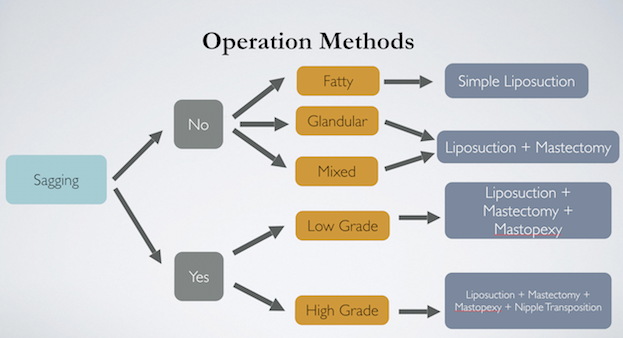
Understanding Gynecomastia Grades
As illustrated in the image on the left, the severity of gynecomastia is classified into four grades, based on the American Society of Plastic Surgeons (ASPS) system. At Evita Clinic, one of the key elements we evaluate is whether the chest shows signs of sagging, which plays a major role in determining the appropriate surgical approach. This grading system helps us tailor the treatment to your individual needs.
The illustration below shows the different grades of gynecomastia, classified according to the standards set by the American Society of Plastic Surgeons (ASPS). You can use this chart as a visual reference to better understand which grade most closely matches your condition.

Surgical Techniques by Grade
Grade I
Mild Gynecomastia
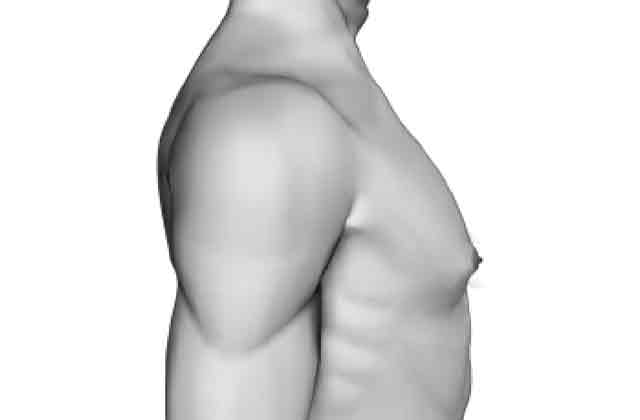
-
Procedure: Simple mastectomy (gland removal only)
-
No liposuction or skin removal required
Grade II
Moderate Enlargement Without Sagging
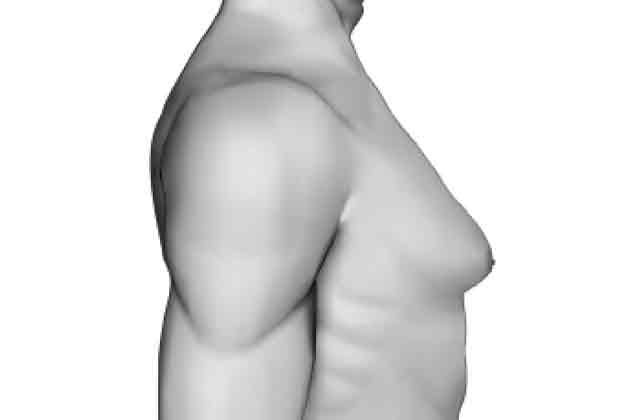
-
Procedure: Gland removal + liposuction
-
Improves overall chest contour
For grades 3 and 4, there is some additional procedure needed to prevent postoperative sagging.
Grade III
Moderate to Severe with Skin Laxity
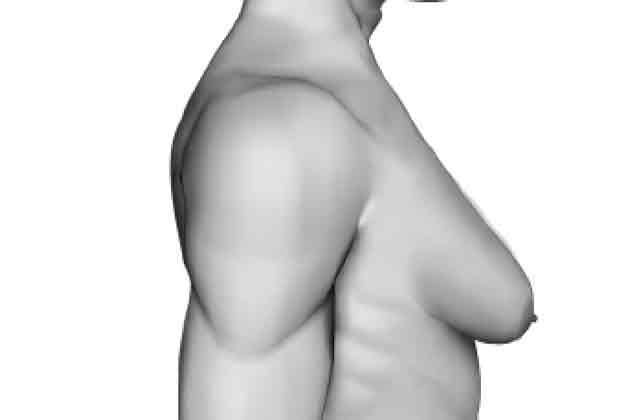
-
Procedure: Gland removal, liposuction, and mastopexy (internal or external lifting)
-
Prevents sagging after tissue removal
Grade IV
Severe Gynecomastia with Nipple Droop
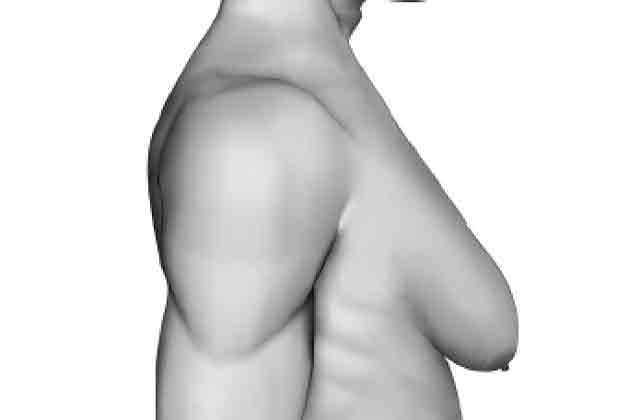
-
Procedure: Gland removal, liposuction, mastopexy, nipple transposition, and skin resection
-
Comprehensive correction for severely enlarged and sagging tissue
Step-by-Step Surgical Process
1. Preoperative Design
Before surgery, Dr. Jeon carefully maps out the surgical plan to ensure optimal precision and aesthetic outcome. This personalized design process involves more than just marking the incision sites—it focuses on achieving balanced, symmetrical chest contours tailored to each patient’s body type.
Dr. Jeon pays special attention to:
-
Symmetry and balance between both sides of the chest
-
Removal of accessory breast tissue (axillary tail) often found beneath the armpits
-
Redefining the shape of the gland by dissecting the rounded gland that adheres closely to the skin and sculpting it into a more defined, square-like contour
This meticulous planning helps minimize irregularities and enhances the final appearance, ensuring a natural yet masculine chest shape after surgery.
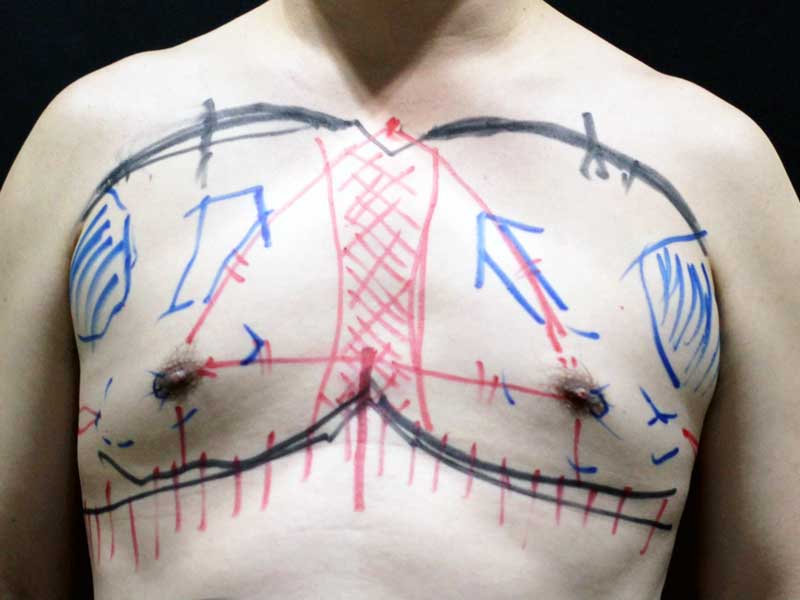
2. Minimal Scar Incision
We use a refined incision technique that minimizes visible scarring. The location and type of incision vary based on the surgical method chosen.
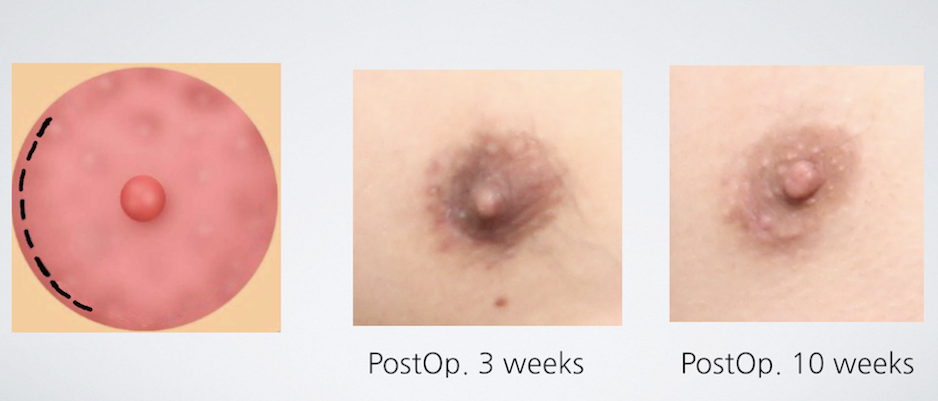
3. Tumescent Anesthesia
A diluted solution of lidocaine and epinephrine is injected to swell and firm the tissue. This technique provides effective local anesthesia and reduces the need for general anesthesia.
4. Laser Lipolysis
We use the Accusculpt™ 1444 nm Nd:YAG laser to promote skin tightening and elasticity post-liposuction. It’s especially helpful in high-grade cases where skin restoration is needed.
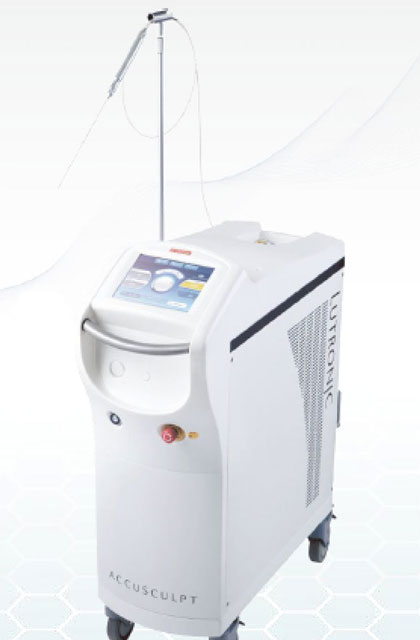
5. Liposuction
Excess fat is gently removed using EVA® Nutational Infrasonic Liposculpture (NIL), a state-of-the-art system that allows for precise and controlled fat removal. This step is crucial for improving overall chest definition, balance, and symmetry.
In fact, liposuction is just as important as gland removal in gynecomastia surgery. By nature, glandular tissue is often surrounded by fat, and the distribution of this fat can vary significantly from person to person. Some patients have dense fat deposits under the arms or across the upper chest, while others may have very little fat under the nipple, where the gland attaches directly to the skin.
This anatomical variability means that a one-size-fits-all approach does not work. In particular, when there is no fat beneath the nipple, removing the gland alone can leave behind a visible depression or sunken appearance.
To prevent this, Dr. Jeon performs detailed and highly customized liposuction, carefully sculpting the surrounding fat to smooth the transition between the gland removal site and the rest of the chest. This technique helps ensure a natural, even contour and minimizes the risk of irregularities or dimpling after surgery.
⏱ Procedure Duration: Approximately 40–50 minutes
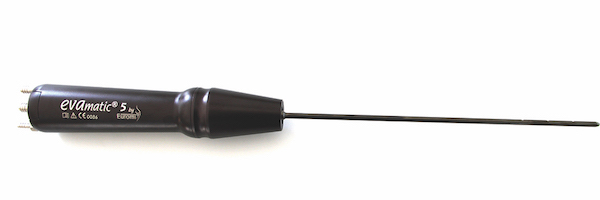
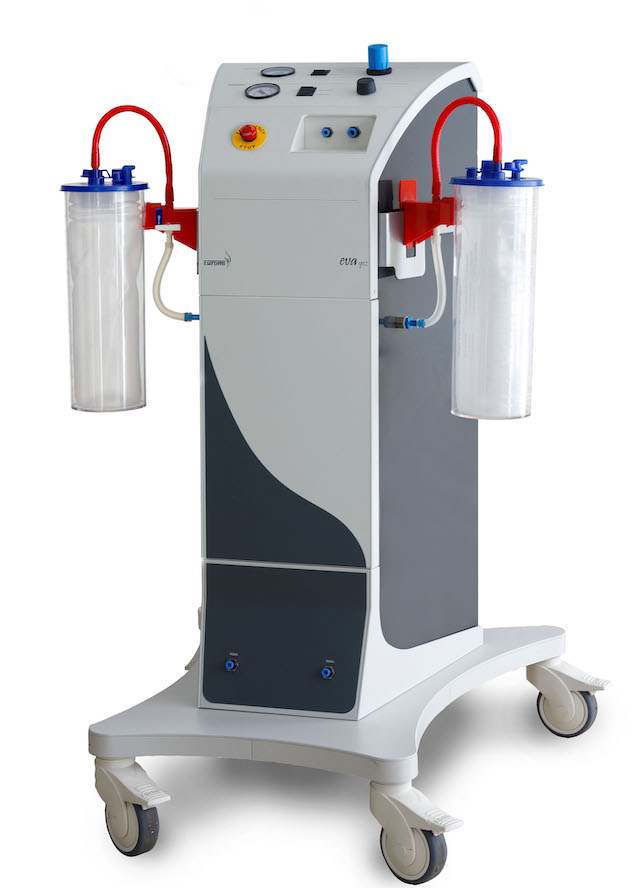
6. Mastectomy (Gland Removal)
The mammary gland is carefully excised to eliminate the underlying cause of gynecomastia. This step is the core of the procedure and requires precision, expertise, and a deep understanding of chest anatomy.
At Evita Clinic, complete gland removal is essential—not only to improve chest contour but also to prevent recurrence. Simply trimming the gland is not enough; Dr. Jeon ensures that the entire glandular structure is excised, while simultaneously rearranging the surrounding fascia and connective tissue to maintain chest integrity and shape.
This procedure also involves handling critical blood vessels and nerves that surround the gland. Dr. Jeon, a specialist in thoracic and cardiovascular surgery, applies his surgical expertise to perform meticulous hemostasis and avoid damage to surrounding structures. His knowledge of microvascular and fascial anatomy ensures a safe operation with minimal complications and optimal healing.
⏱ Procedure Duration: 1–2 hours
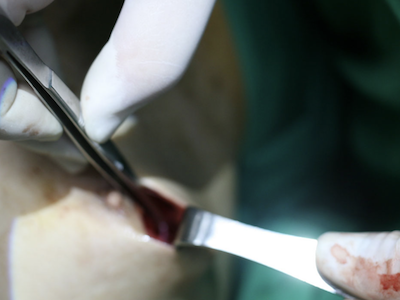
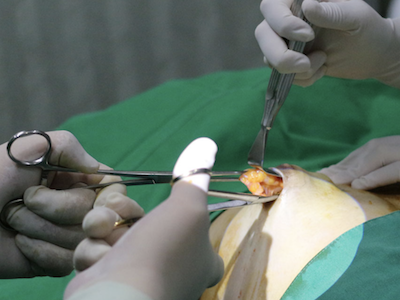




Advanced Surgical Options for Grades III & IV
For high-grade gynecomastia (Grade III and IV), there is often significant tissue excess—including excess skin, enlarged areolae, and downwardly displaced nipples—that requires more advanced surgical management. Conventional breast reduction or liposuction alone is often insufficient to achieve optimal results in these cases.
To address these complex features, specialized mastopexy techniques may be recommended, such as circumareolar excision (donut mastopexy), anchor resection, or double incision methods. The most suitable approach will be carefully determined during an in-depth consultation with Dr. Jeon prior to your surgery, ensuring your treatment is fully customized to your anatomy and aesthetic goals.
Circumareolar Excision (Donut Mastopexy)
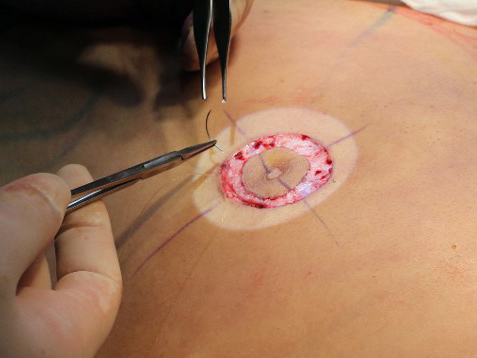
-
Designed for moderate skin excess with mild nipple sagging
-
Can elevate the nipple slightly (<2cm) and reduce areola size
-
⏱ Adds approx. 1 hour to surgery
-
Additional Cost: KRW 1,000,000
Anchor Resection or Double Incision
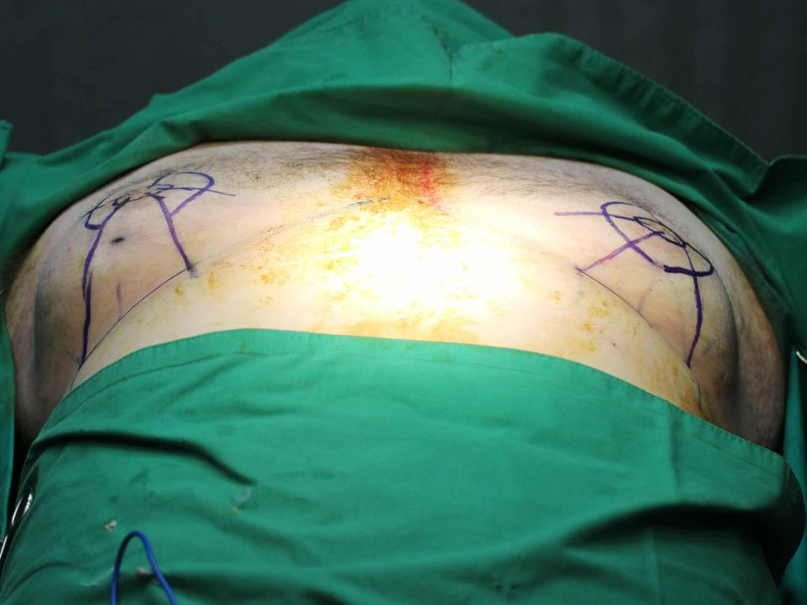
-
Used for severe cases with pronounced nipple displacement
-
Involves periareolar, vertical, and horizontal incisions (inverted-T scar)
-
Provides >2cm nipple elevation and reshaping
-
⏱ Adds approx. 4 hours to surgery
-
Additional Cost: KRW 2,000,000
-
Recovery Time: Around 2 weeks
7. Recovery
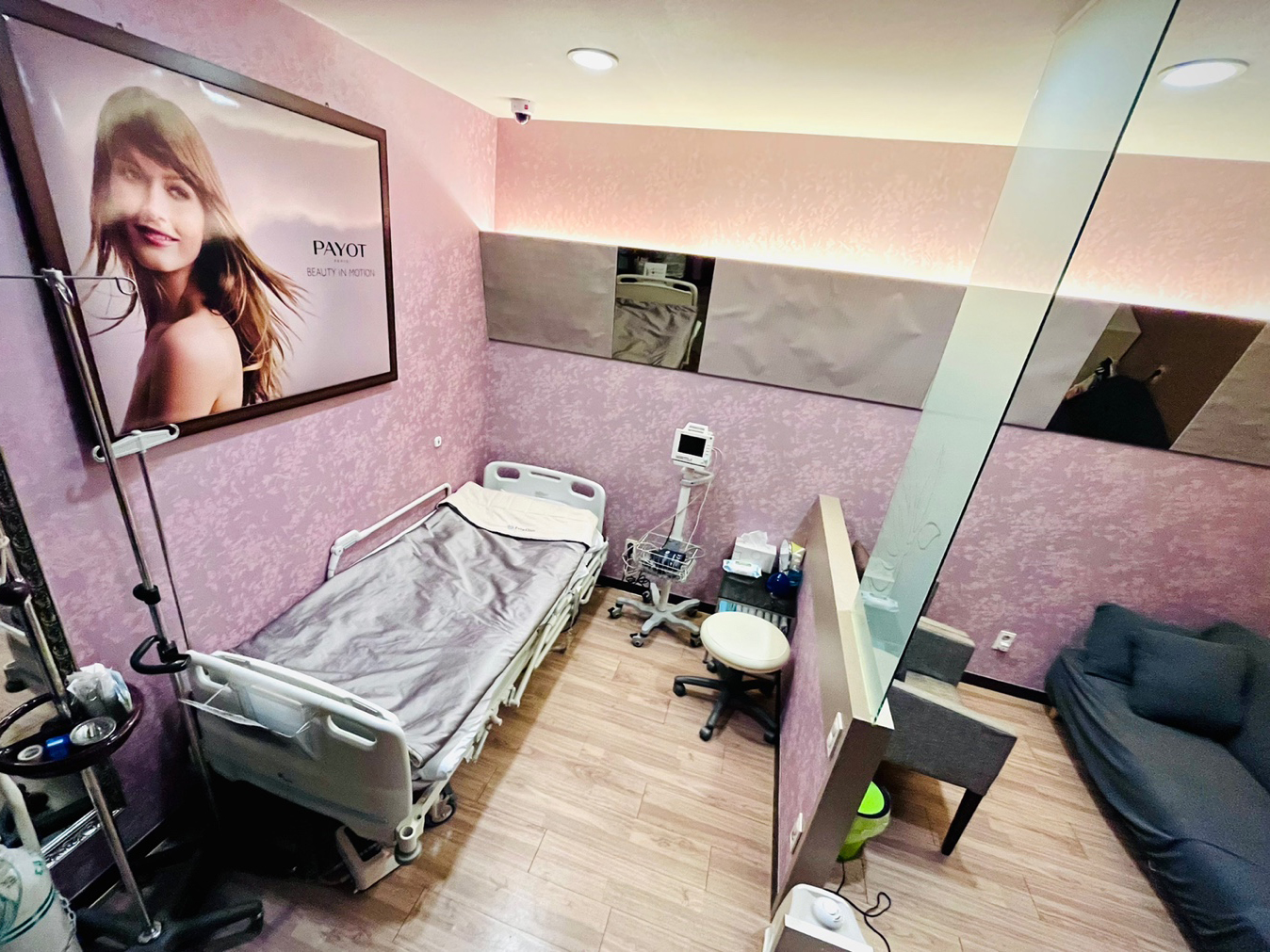
After the surgery is complete, you will be moved to our postoperative recovery room, where you will be carefully monitored for the next 2 to 3 hours. During this critical period, our experienced nursing team will provide close observation to ensure that your vital signs are stable and that you are recovering safely from the effects of sedation or anesthesia.
You may still feel drowsy at first, but our staff will assist you with oxygen supply, fluid balance, and pain control as needed. We prioritize your comfort and safety during this transition phase. The nursing team will check the surgical site for any immediate signs of bleeding, excessive swelling, or other complications. If any concerns arise, Dr. Jeon will be immediately informed and will assess your condition directly.
Before you are discharged, we will make sure that:
-
You are fully alert and responsive
-
You can walk on your own with minimal assistance
-
Postoperative instructions have been thoroughly explained
-
You and/or your caregiver understand how to manage dressings, medications, and follow-up appointments
In some cases, if you received a high-grade gynecomastia procedure (Grade III or IV), we may keep you under observation for a longer period, depending on your individual response to surgery.
We believe that the recovery process begins the moment surgery ends, and Evita Clinic is committed to providing comprehensive care every step of the way.
Pathologic Report
As part of our commitment to thorough and safe surgical care, all excised glandular tissue is sent for histopathologic evaluation. This biopsy is performed to rule out any abnormal or malignant cells within the removed tissue.
Typically, the pathologic report is ready within one week after surgery. Once available, we will review the results with you and answer any questions you may have. While gynecomastia is rarely associated with serious pathology, this step offers peace of mind and reflects our standard of care.

